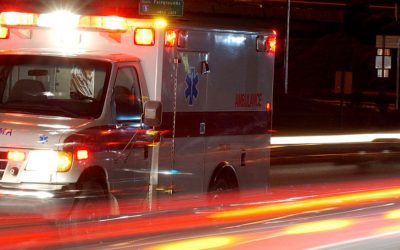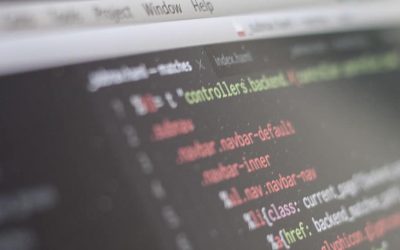Artificial Intelligence (AI) is now one of the hottest topics in the telecoms world and is already beginning to show its vast potential in deployments of mission-critical communications (MCC or MCX) solutions. According to research from Markets & Markets, the AI market was valued at USD 16.06 billion in 2017 and is expected to reach USD 190.61 billion by 2025.
Today, many telecom operators are involved in MCX and Internet of Things (IoT) deployments to one degree or another including AT&T, Verizon, EE, Orange, and Telefonica. The subject is so vast that it offers limitless depth and layers to be explored.
There are many standards for IoT connectivity as there are for device discovery, management, control … There are also numerous constraints which need to be considered in IoT deployments – security, connectivity, battery consumption, firmware updates, lifecycle management, low power transmission, operation in harsh environments, cost sensitivity, form-factor, memory limitations – the list seems endless.
Deployment also brings its own set of decisions – separation between the cloud and direct access, integration of fog/edge computing, remote management, and more. All these factors are essential and have to be taken into account by IoT implementers, integrators and service providers.
However, a user’s view of IoT is quite different to that of the IoT provider. The user is shielded from all the layers of complexity, and is more simplistic and can be presented like this:
- Data: IoT provides data, a lot of data. But how data is obtained, extracted, and processed is not essentially relevant to users.
- Automation: The whole purpose of data is to enable control, and to automate control. If a water sensor on the floor detects a leak, it is far better to instantly send a signal to an actuator in the water valve coming into a home to close the valve instantly instead of sending the alarm to a home owner and waiting for his/her decision to call the plumber.
Data is the precursor and foundation of control and automation. Automation of decision making is a principal goal of IoT, and the outflow of data from an IoT system makes it possible. If a turbine sensor starts reporting increased vibration, it well might be the time to schedule preventive maintenance. If a temperature sensor in a building reports rapid increase in temperature, and a smoke sensor reports the appearance of smoke, it might be necessary to turn on the sprinklers and send an alarm to the fire station.
Some control decisions can be easily automated with algorithms ( (temperature > safe threshold) + (smoke = yes) = sprinklers on and raise fire alarm). But some decisions require extensive analysis and might be better left to AI solutions to learn and monitor trends, and then suggest or implement an action.
IoT, AI and Public Safety
What’s ahead for the Internet of Things, particularly with the focus on Public Safety? When it comes to Public Safety and saving human lives, there can never be enough technology to throw at that task. There is of course a depth of laws, regulations and policies which will mingle with and affect what, where, and how IoT technology can be implemented to allow for people to maintain at least an impression of privacy in their lives. But leaving all the issues of laws, policies and regulations aside, we are looking at an endless array of possibilities driven by three components – IoT, data analytics and AI.
The City of Chicago has about 35,000 cameras installed throughout the city. Think about audio-enabling those cameras, and adding AI elements on the back-end, making it possible to distinguish between innocent chatter and an angry mob about to trash the convenience store. Or the same AI cameras being able to distinguish between heavy objects falling and the sound of gun shots – if the sound is identified as gun shots, police officers need to be dispatched to the scene immediately, or a surveillance drone sent in advance of any officers arriving and risking their lives.
Or how about the sound of a heavy object falling, coupled with location data, where it is known that a construction crane is in proximity to the sound location? Maybe public safety personnel need to be dispatched to check.
Here you have simple examples of the applied use of basic IoT data and advanced AI algorithms working together to provide significant benefits to first responders for enhanced public safety. Yes, there are a lot of legal and policy issues to solve before such solutions can be implemented wholescale, but it is technologically possible in the very near future.
Another simple use case for what is possible in the near future is efficient traffic accident handling. Using AI to analyze crash data from vehicles, IoT-enabled infrastructure, cameras, and other IoT-enabled user devices, first responders can have all information required about the severity of the crash, the need for medical personnel, the medical equipment required, and optimized routes for the fastest arrival. Subsequent destination routes when medical care needs to be obtained from a specialized center with appropriate medical teams would also be made available. All of this decision making can be automated with the help of AI.
The future is bright but policy solutions needed now
While the future is bright and IoT/AI has tremendous promise for public safety applications, many technological and policy advancements and solutions are now required.
Security is of paramount concern – billions and billions of connected devices need to be secure – for access, control, authenticity, and so on. Think about the implications of a malicious actor taking control over any of the devices involved in our first use case. Security needs to be the first design requirement of any IoT deployment before the first line of code is written or the hardware components placed on circuit board drawings.
IoT devices need to be remotely managed – the firmware needs to be upgraded, configuration needs to be changed, behavior and logic securely modified – all remotely, without having physical access to the device and without taking the device out of service.
Many IoT devices are battery and memory constrained, yet need to operate continuously and reliably in any environment – this needs to be considered during any IoT system design.
Connectivity is yet another challenge. Battery-powered devices usually have very low transmission power yet have to stay connected all the time. The question begs. How will the network react to a large group (say, 10,000) of devices all trying to communicate at the same time for one reason or the other?
IoT usage policies also need to be developed. In our first use case, if all cameras are also listening to audio streams, how will people feel? What are the policies for recording, data retention, fair use, and so on? Of course, the same question applies to the use of video. If a person can always be identified, and therefore tracked via his/her vehicle using any of the IoT sensors offered by car-to-car communications, does this violate someone’s privacy?
IoT and AI hold great promise and will become the ultimate tool of first responders. Successful implementation of IoT mechanisms for public safety has great value to first responders and society as a whole. Nevertheless, there is a road from here to there, and this road needs to be traveled. There will be no magic teleportation – just a lot of hard work to arrive at that desired destination.






